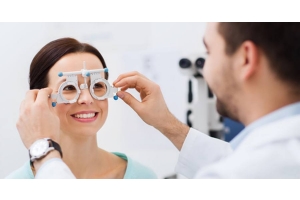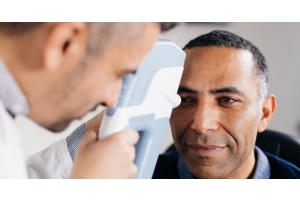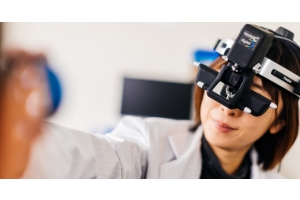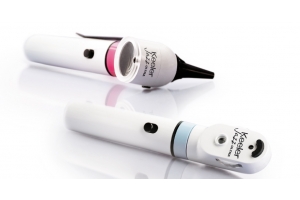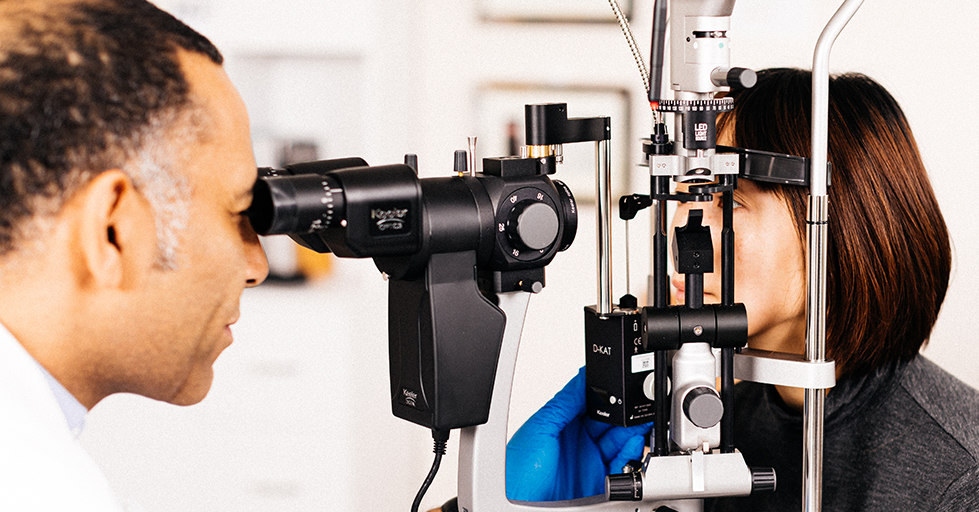
If you're considering training to be an optometrist, understanding the many optometry devices can be overwhelming.
To help you navigate the complex world of optometry equipment and its uses, our experts have collated this simple guide.
Direct Ophthalmoscopes
A direct ophthalmoscope is a handheld device used to look at the inside of the patient’s eye. Direct ophthalmoscopes utilise a set of lenses that focus on certain eye structures.
With direct ophthalmoscopy, the physician looks through one of the small lenses into the eye to view the appearance of the:
- Cornea
- Lenses
- Vitreous humour
- Aqueous humour
- Surface of the retina
Direct ophthalmoscopes allow practitioners to see intricate details with the ability to utilise magnification of around 15x and between approximately 6-8° field of view.
Indirect Ophthalmoscope
The binocular indirect ophthalmoscope (also known as BIOs) is a headset device the practitioner wears. This device is used with a condensing aspheric lens placed close to the patient's eye. BIOs allow practitioners to observe the entire retina and have access to a wider field of view in comparison to the direct ophthalmoscope.
As a result, BIOs usually have a magnification of between 2-5x. Some BIOs – like the Vantage Plus Digital System – are used for training and include a built-in video camera, so students can effectively observe.
You can also explore our wide range of additional BIO accessories for multiple uses.
Slit Lamps
Slit lamps are table-mounted instruments or hand-held slit lamps used to look into a patient’s eyes with bright light and a microscope. Slit lamps can have a range of magnification strengths from 6x up to 40x.
The beam of light can be modified in various ways, including:
- Height
- Intensity
- Angle
- Width
- Colour
- Direction
Patients can gently rest their chin and forehead against a slit lamp device while the eye doctor examines their eyes from the other side. Different types of slit lamps can detect deeper and more serious issues such as cataracts, corneal lesions and corneal ulcers.
Surgical Loupes
Surgical loupes are telescopic additions to glasses or goggles commonly used by physicians and practitioners. Surgeons commonly use surgical loupes during surgery, but any eye doctor can use them to inspect a patient’s eyes more closely.
For eye doctors and eye surgeons, surgical loupes help examine the surfaces of parts of the eye, including the cornea's surface. Eye surgeons also typically wear surgical loupes during certain types of eye surgery.
Retinoscopes
A retinoscope is a hand-held device used to measure errors in the reflection. Retinoscopy is a valuable technique for prescribing corrective lenses; typically, the test produces a good baseline for narrowing down the exact prescription via a subjective refraction test.
Pachymeters
A pachymeter is a device for measuring the thickness of the corneas of a patient’s eyes. These devices come in a variety of shapes and sizes. While the handheld pachymeter is quite common, you'll also find a wide range of tabletop instruments. Pachymeters are a vital measurement tool to use before eye surgery and are helpful when a practitioner suspects a patient has glaucoma.
Tonometers
A tonometer is an advanced medical device for measuring ocular pressure. It is used to test the fluid pressure inside a patient’s eyes and is a helpful screening tool for glaucoma.
Just like pachmeters, there is a vast range of different types of tonometers available in different shapes and sizes for various techniques and tests:
- Standard contact and digital tonometers will actually touch the patient’s eye
- Non-contact tonometers use a puff of air to measure the IOP and do not touch the patient’s eye
Ophthalmic Cryosystems
Cryotherapy devices use frigid temperatures to treat conditions of the eyelids or eyes. They are typically utilised as a surface technique to treat a range of conditions and disorders.
Some of the common applications of ophthalmic cryosurgery include:
- Cryoextraction of cataracts
- Cyclocryopexy for advanced glaucoma
- Retinal cryopexy
- Freezing of lash roots for recurrent trichiasis
- Peripheral retinal cryoablation for neovascular glaucoma
- Cryosurgery for conjunctival neoplasias of the epithelium
- Cryotherapy for malignancies of the eyelids
- Peripheral retinal cryoablation
- Cryoablation of retinoblastomas
Volk Lenses
Volk produces the finest quality lenses and imaging systems available. Recognised worldwide as a premier designer and manufacturer of precision diagnostic and laser lenses, Volk lenses are an excellent choice for a range of optometry devices.
Contact Keeler for high-quality optometry exam room equipment
If you’re looking for the best optometry exam room equipment, Keeler Ophthalmic Instruments will meet your needs and exceed your expectations. For over 100 years, we’ve continually innovated to help eye care professionals deliver exceptional results.





